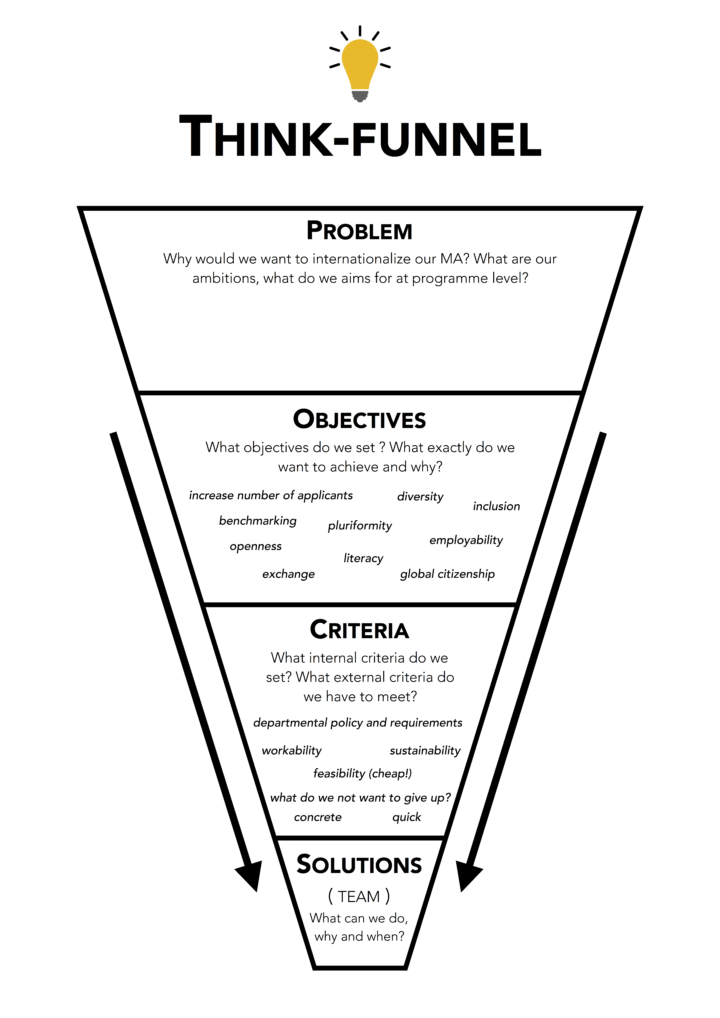How to brainstorm and strategize internationalization at MA team level?
Through bi-weekly posts, MA staff participating in the USO project on internationalization will share concrete teaching tools and activities through which we aim to enhance ‘tailor-made’ internationalization.
Looking for ways to brainstorm and strategize or rethink internationalization at MA team level? Perhaps these methods can be of help.
1) Answering the ECA questions
The European Consortium for Accreditation in Higher Education (ECA) argues that internationalization is not going to work if not supported by MA teaching staff. Despite ambitious UU targets to increase the percentage of English taught Masters as a way to include more diversity, English for instance is no panacea. Internationalization has many dimensions, and needs to be tailor-made and ‘thought up’ at programme-level.
The ECA advices MA teaching staff to think through a set of key questions. Bear in mind that your internationalization strategy should be supported by staff, students and stakeholders. So, perhaps invite these to the table as well. Try and answer the following questions.
GOALS: what is intended by internationalization: what are our ambitions, what do we aim for at programme level?
OBJECTIVES: what objectives do we set ? What exactly do we want to achieve when?
LEARNING OUTCOMES: what are the appropriate global/international and intercultural elements and/or competences that a student is expected to be able to know, understand and demonstrate after having successfully completed our programme?
Check the ECA website for very useful documents and instructions: http://ecahe.eu/home/internationalisation-platform/certification/relevant-documents/
2) Use the denktrechter
An additional way to start a team discussion on internationalization is to use the “denktrechter” (think-funnel) method. Here you move from problem to solutions through narrowing down the problem in terms of objectives and criteria. Stick to the following rule: only after you have jointly identified the problem (e.g. “how and why do we want to internationalize our MA?”), the objectives (e.g. “what do we aim to achieve through internationalization?”), and criteria (“what criteria do we set; what external criteria do we need to meet?”) you begin a discussion on solutions. The picture below shows an example.

21 juni 2017
U moet ingelogd zijn om te reageren, gebruik het formulier aan de linkerkant om in te loggen met uw solis gegevens.

